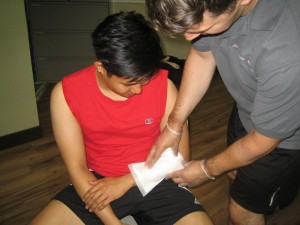Observing proper provisions when changing bandages can make a big difference between a properly cured wound and a developing infection. Always bear in mind that open wounds are prone to bacteria as well as small debris such as dirt. You have to cover the wound with bandages on a regular basis and also require changing due to two main reasons. Initially, the bandages help protect the skin from infection and it helps shield other people from exposure to any fluids that the wound might secrete.
http://youtu.be/klM8pk9OAik
It is important to change the bandages in the morning and at night as well as after every shower or bath. It is best to consult a doctor regarding the changing of bandages if the wound has large amounts of bleeding or drainage.
Steps on how to change bandages
If a family member has any type of wound, it is important to observe how to properly change the bandages. By enrolling in a first aid class, you will learn how to change bandages correctly since this is one of the basics that you will learn.

- Initially, always wash your hands with soap before changing bandages. Scrub your hands for about a minute and then rinse with warm water. Dry the hands thoroughly on a paper towel and wear a pair of rubber gloves.
- Peel off the edges of the soiled bandage or adhesive in a slow manner to avoid disrupting the healing process. Clean gently any excess fluids or drainage using an antibacterial towel. With your finger, dab a small amount of antibacterial ointment over the wound to prevent infection from developing. Dispose of the rubber gloves and the soiled bandage in a plastic bag.
- Wear a clean pair of rubber gloves and place a new bandage on the wound. You have to seal carefully the borders using a medical tape if needed or simply push the adhesive back into the skin in order to prevent irritants from accessing the wound. Take off the rubber gloves and place inside a plastic bag.
- You have to wash your hands again using soap and warm water. Make sure that you will seal the plastic bag and dispose it in a medical waste container or appropriate garbage bin.
Always remember that regular changing of the bandages is a must especially for large open wounds. This will help minimize the risk for infection as well as help promote a faster healing process.
Important considerations to bear in mind
Always use an antibacterial lotion or gel when washing your hands if soap and warm water are unavailable. You should also pay close attention to any obvious changes in the color, texture and secretions of the wound. If the wound has a yellow or green fluid discharge, it is best to consult a doctor right away since this indicates a serious infection.
